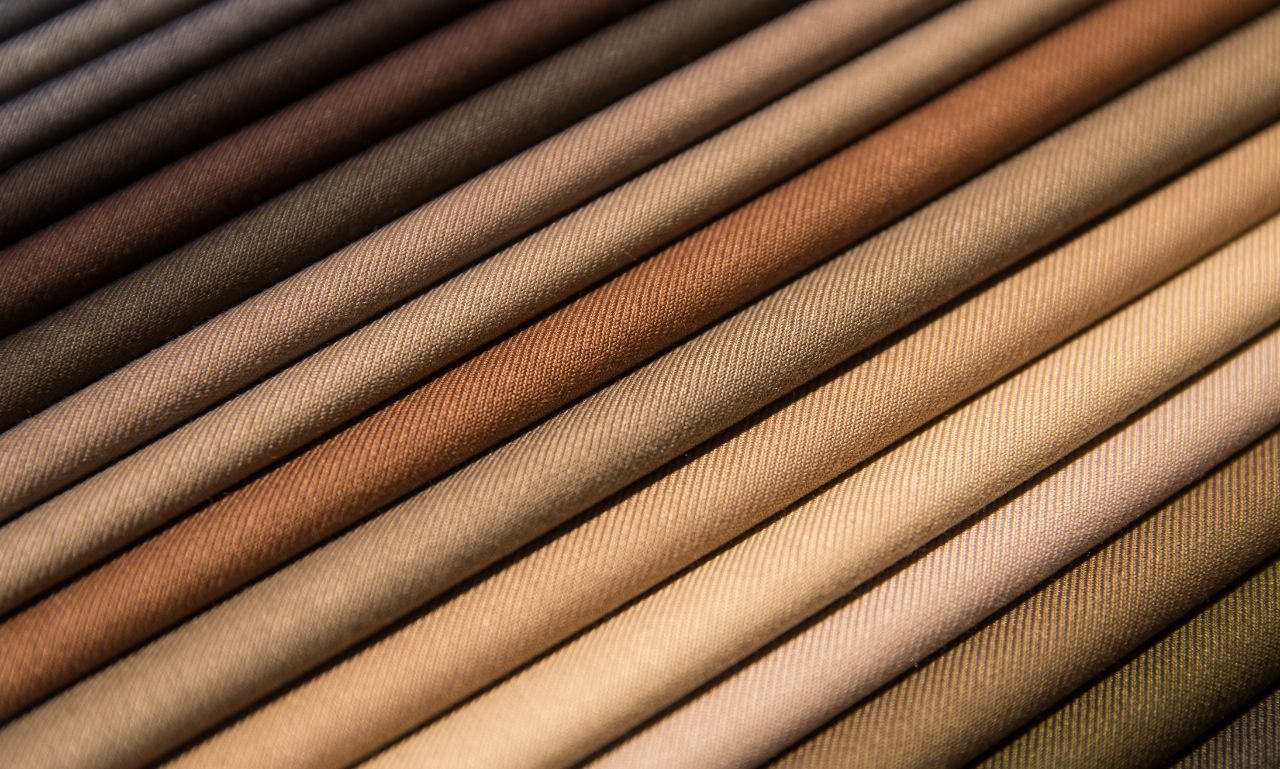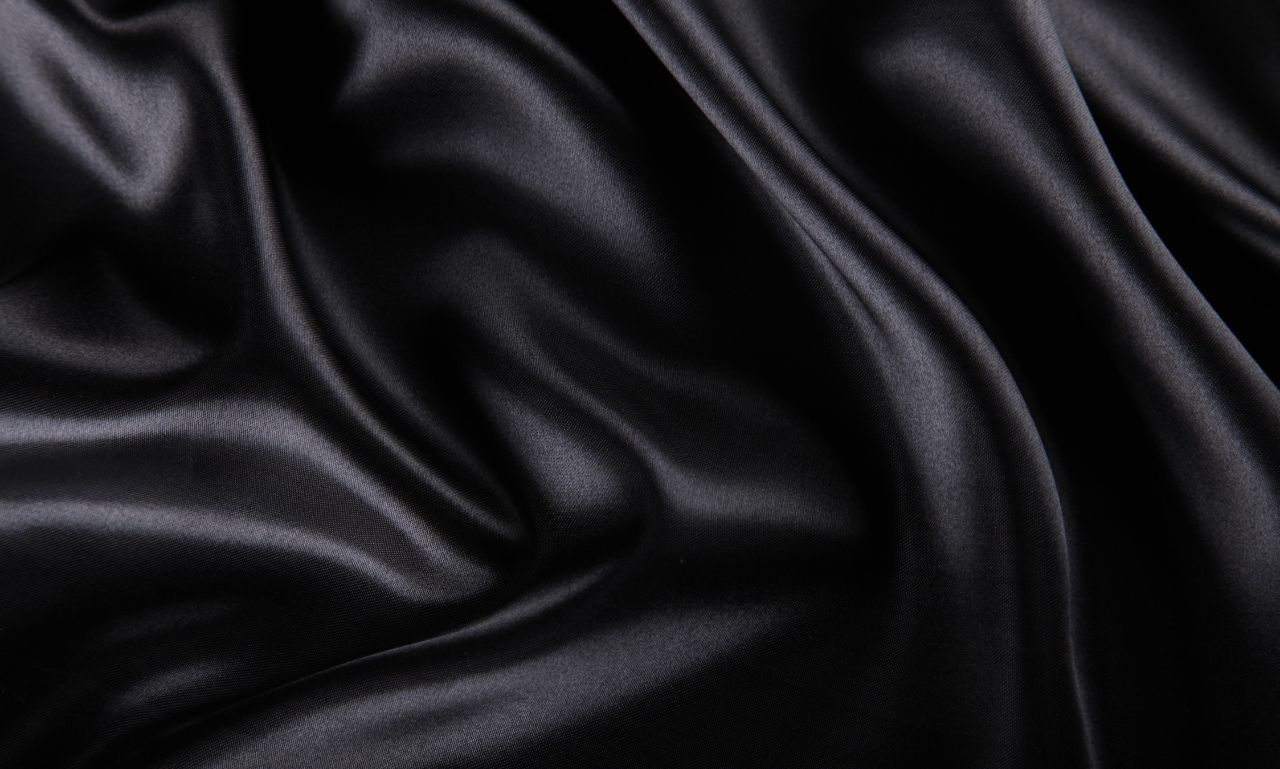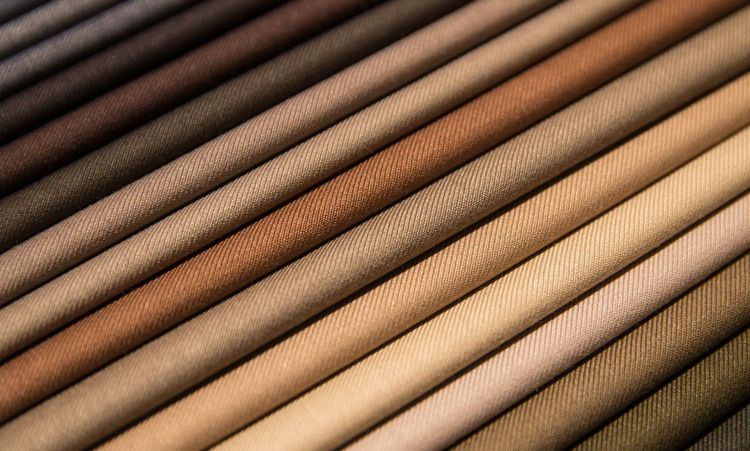Preserving the beauty and integrity of your most treasured clothes requires expert expertise and care. Proper care ensures that everything from couture dresses to items worn in extremely fragile fabrics can last for decades. This comprehensive guide will utilize master techniques to protect your most precious clothes.
Fabric Storage
Proper storage is the most overlooked aspect of couture garment care. How you store your clothing when it's not being worn can significantly impact its longevity and appearance.
Creating the Ideal Storage Environment
Sunlight exposure can cause fabric discoloration and fiber deterioration over time. Basements and attics are generally poor due to humidity fluctuations and temperature extremes.
The ideal environment is a dedicated closet with adequate air circulation. If possible, keep your most delicate pieces in a climate-controlled area of your home. This consistency helps prevent mold, mildew, and the breakdown of natural fibers.
Choosing the Right Hangers

Wire hangers are the nemesis of dainty clothes. They can warp shoulders and form lasting creases on lightweight fabric. Instead, shell out for padded hangers for dainty blouses and dresses and wide wood hangers for bulkier items such as coats and lined jackets. Consider using specialized hangers for evening wear for pieces with dainty straps or other odd shapes. These usually have notches or padding to hold the item in place while supporting the garment's shape.
Protective Covers and Spacing
Breathable garment bags are essential for protecting couture pieces from dust while still allowing air circulation. Avoid plastic covers, which trap moisture and can lead to mildew or yellowing of fabrics.
Give each unique piece enough space in your closet to prevent crushing. Crowding garments can create permanent wrinkles and damage embellishments. Use individual garment bags to avoid snagging between items for extremely valuable pieces.
Special Considerations for Long-Term Storage
Acid-free tissue paper becomes your best ally for seasonal items or pieces you won't wear frequently. This specialized paper prevents yellowing and preserves the garment's original condition. Place acid-free tissue between folds when storing folded items like sweaters or delicate knits to avoid permanent creasing. Add lavender sachets rather than harsh chemical mothballs to protect against moths and other pests.
Ironing the Fabric
Heat can be both a savior and destroyer of delicate fabrics. Knowing when and how to apply heat is crucial for maintaining your garments' appearance without causing damage.
Testing Temperature Settings
Always test an inconspicuous area before applying an iron to any delicate fabric. Inside seams or hem edges make good testing spots. Begin with the lowest heat setting and gradually increase only if necessary.
Many modern irons include fabric-specific settings, but these should be considered guidelines rather than absolute rules. Your specific garment may require even gentler treatment, depending on its condition and composition.
Using Pressing Cloths and Steam
A pressing cloth—a thin piece of cotton or silk placed between the iron and your garment—provides an extra layer of protection. This simple tool prevents direct heat contact while still allowing wrinkles to release.
For extremely delicate items, consider steam alone. Holding a steamer several inches away from the fabric often removes wrinkles without any contact. This technique is particularly valuable for beaded fabrics, sequins, or wonderful silks.
Alternative Wrinkle-Removal Methods
Sometimes, the safest approach is to avoid traditional ironing altogether. Hanging garments in a steamy bathroom can gently release wrinkles. For stubborn areas, lightly mist them with distilled water and allow them to air dry.
Professional pressing may be the safest option for exclusive laces or intricate embellishments. Couture-level garment care experts have specialized equipment and techniques for handling these challenging materials.
Stain Removal and Dealing with Unexpected Clothing Emergencies
The heart-stopping moment when a drop of wine lands on your favorite silk dress requires immediate but careful action. The quick response often determines whether a stain becomes permanent.
First Response to Fresh Stains
Blotting—never rubbing—is the golden rule of emergency stain treatment. Use a clean, white cloth to gently lift away the substance without pressing it deeper into the fibers. Avoid colored towels that might transfer dye to your already compromised garment.
Cold water can help dilute water-based stains on washable fabrics before they are set. However, attempting home remedies for oil-based stains or marks on delicate fabrics like silk may cause more harm than good.
I once attended a gala wearing a vintage beaded gown when someone bumped into me with a glass of champagne. Instead of panicking, I quietly excused myself, gently blotted the liquid with cocktail napkins, and let it air dry. The next day, I took it directly to my trusted dry cleaner, who specializes in vintage textiles. Their expertise ultimately saved the dress—you'd never know there had been an incident.
When to Seek Professional Help
Professional cleaning becomes essential for:
- Stains on non-washable fabrics
- Oil-based stains (makeup, food grease)
- Unknown stains where you can't identify the substance
- Stains on extremely valuable or irreplaceable items
- Any stain on beaded, sequined, or embellished areas
When selecting a dry cleaner, look specifically for those with advertising expertise in couture or vintage garments. These specialists understand the unique needs of luxury fabrics and often offer hand-cleaning services rather than standard machine processes.
Home Solutions for Minor Issues
Gentle spot-cleaning may be appropriate for minor stains on more durable, delicate fabrics. Always test any solution on an inconspicuous area first.
A mixture of mild detergent and cold water can address small spots on some fabrics. Apply with a clean cotton swab, working from the outside of the stain inward to prevent spreading. Rinse by blotting with clear water and allow to air dry completely.
Care for Your Couture Clothing for a Longer Life
The everyday handling of your unique pieces significantly impacts their longevity. Minor adjustments to your routine can extend your life considerably.
Rotation and Rest Periods
Even the finest garments need recovery time. Wearing the same silk blouse multiple days a row doesn't allow the fibers to regain their natural resilience. To extend the life of your favorite pieces, implement a rotation system.
For knitwear like cashmere, a 24-hour rest period allows the fibers to return to their original shape. Hanging a just-worn sweater can stretch the fabric permanently.
Protecting Against Body Oils and Perfume
Apply perfumes, lotions, and deodorants before dressing. These products can cause staining and fiber degradation that may not be immediately visible but will develop over time.
Consider wearing protective layers underneath when appropriate for garments worn close to the skin. Simple cotton camisoles can shield delicate blouses from body oils and perspiration.
Minor Repairs and Maintenance
Address minor issues before they become significant problems. Loose threads, missing beads, or minor seam separations should be repaired promptly before they expand.
Keep a basic sewing kit with appropriate colored threads for emergency repairs. Document the damage with photos and consult a professional tailor specializing in couture work for more complex issues or valuable pieces.
Washing and Cleaning Delicate Fabrics
Cleaning presents the most significant risk to delicate fabrics, yet regular maintenance prevents dirt buildup that can cause permanent damage.
Decoding Care Labels
Care labels provide valuable information but in cryptic symbols. Familiarize yourself with common care symbols, photograph the tag, and research unfamiliar marks before attempting any cleaning method.
A few designer goods will be labeled "Dry Clean Only" as a precautionary measure, while some others will actually read "Professional Wet Cleaning" or even "No Cleaning Method Available." The latter requires highly specialized care.
Hand Washing Techniques
When hand washing is appropriate:
- Use room temperature or cold water with a detergent specifically formulated for delicate fabrics
- Avoid soaking—quick, gentle agitation is sufficient
- Never wring or twist—press the water out gently between clean towels
- Reshape the garment while damp and dry flat on a clean white towel
Cashmere and fine wools respond well to gentle hand washing with specialized wool. These natural fibers benefit from the occasional conditioning that proper hand washing provides.
Drying Methods That Preserve Fabric Integrity
Air drying is almost always preferable for delicate items. Never use a clothes dryer for fine fabrics unless indicated on the care label.
Lay flat to dry on a clean white towel, reshaping the garment to its original dimensions. For items that tend to stretch, roll them in a clean towel first to remove excess water.
Avoid hanging wet, delicate knits that can stretch from their weight. Conversely, structured items like linen dresses may benefit from careful hanging while slightly damp to release wrinkles naturally.
How do you care for vintage fabric?

Vintage textiles require specialized knowledge due to their age and often unknown history. These pieces have already survived decades and deserve particular attention.
Assessing Condition and Fragility
Begin by examining antique items thoroughly for any existing damage, prior repair, or vulnerabilities. Extremely fragile items should remain as display pieces and never be used as wearable items. Photograph any existing issues before even attempting to clean or restore them. This way, the object's condition can be tracked over time and acts as a reference for professional conservators.
Specialized Cleaning Approaches
Professional conservators specializing in textile preservation offer the safest approach for valuable vintage items. Before recommending appropriate cleaning methods, these experts can test fabrics for colorfastness and structural integrity.
After careful testing, gentle hand washing may be appropriate for less precious vintage items. Always use cool water and pH-neutral soap explicitly formulated for antique textiles.
Storage Considerations for Aged Fabrics
Older materials may also have different demands than newer materials. Acid-free tissue is more critical, and so is an even storage environment. Archival-quality storage containers overhanging for extremely old clothes are under consideration. These specialty containers avoid light damage, dust, and humidity fluctuations while supporting the garment's structure.
Which method is suitable for treating delicate fabrics?
Different fabrics require tailored approaches to cleaning and care. Understanding each material's specific needs ensures appropriate treatment.
Silk Care Essentials
Silk requires gentle handling and protection from water spots. Hand washing in cool water with specialized silk detergent works well for washable silks, but always test for colorfastness first.
Ironing silk requires low heat and a pressing cloth. Steam often works better than direct iron contact. For structured silk garments like blazers, professional dry cleaning is typically safest.
Lace and Embroidered Items
The three-dimensional nature of lace and embroidery creates unique challenges. Never rub these fabrics, as threads can catch and pull.
For cleaning, gentle hand washing or professional wet cleaning works for many lace items. Lay flat to dry, carefully arranging the pattern to maintain its original shape. Some antique laces may require specialized conservation techniques.
Beaded and Sequined Garments
Embellished garments typically cannot withstand standard dry cleaning machines. Hand cleaning by a couture specialist or careful spot cleaning of the fabric portions only may be necessary.
Store these items flat rather than hanging, with acid-free tissue supporting embellished areas when possible. Never iron directly over beading or sequins—steam carefully from a distance instead.
What is the proper care and maintenance of fabrics?
Beyond cleaning, a complete fabric care regimen includes preventative measures and regular maintenance to extend garment life.
Seasonal Care Routines
Implement a seasonal rotation system with appropriate cleaning before storage. Winter garments should be thoroughly cleaned before summer storage to prevent moth damage from invisible food particles or body oils.
Inspect for needed repairs when transitioning items between seasons and refresh any protective storage elements, such as cedar blocks or lavender sachets.
Managing Humidity and Temperature
Maintain consistent humidity levels to prevent mold and mildew. Dehumidifiers in damp environments and humidifiers in arid climates help create optimal conditions. Temperature fluctuations can stress delicate fibers. Avoid storing precious garments in attics, garages, or other spaces with extreme temperature variations.
When to Invest in Professional Services

Professional garment care becomes a worthwhile investment for:
- Annual maintenance of investment pieces
- Special occasion preparation and post-event care
- Addressing complex stains or odors
- Preserving heirloom or vintage items
Develop a relationship with specialists in your area who understand the value of your collection. Many high-end dry cleaners offer membership programs with specialized care for couture clients.
Conclusion
Maintenance of valuable fabrics and haute couture requires knowledge, patience, and attention, but the payoff is worth it. Proper storage, proper cleaning, and regular maintenance will keep your most valuable clothes lasting years or even generations.
The enjoyment of wearing and owning exquisite apparel comes with the responsibility of prudent stewardship. With these practices, your beloved fabrics and tailored pieces will be a source of delight and confidence for countless seasons.




